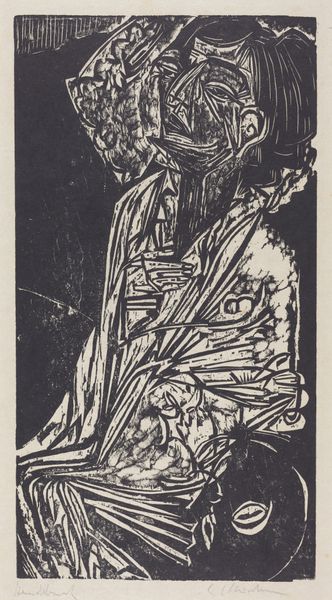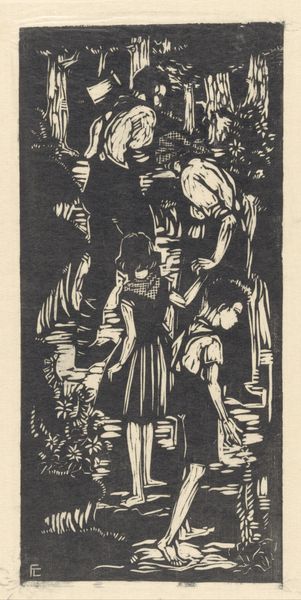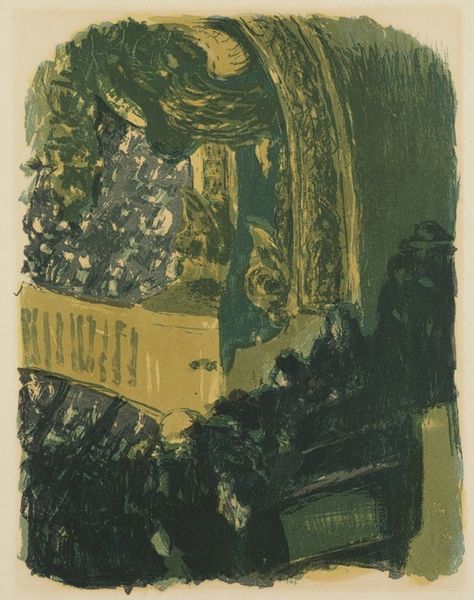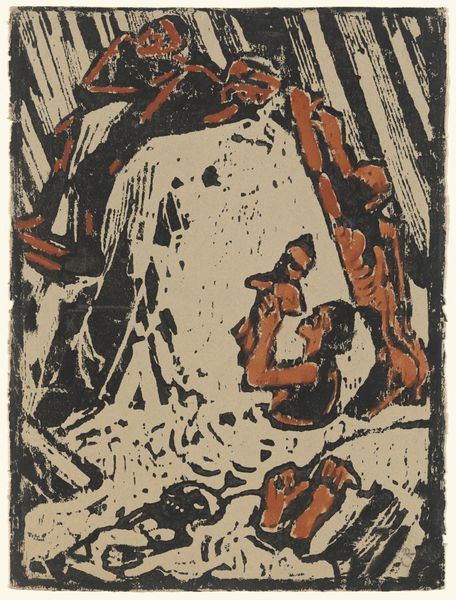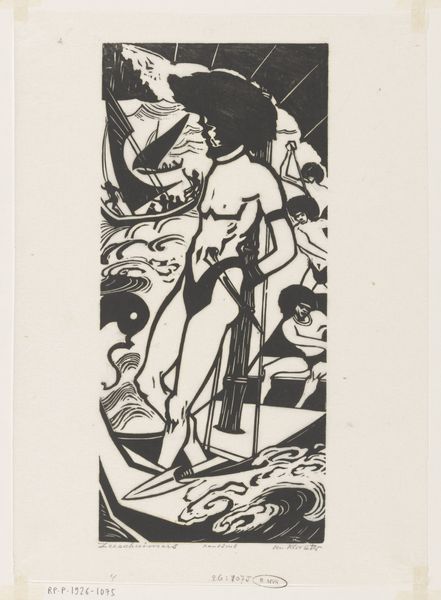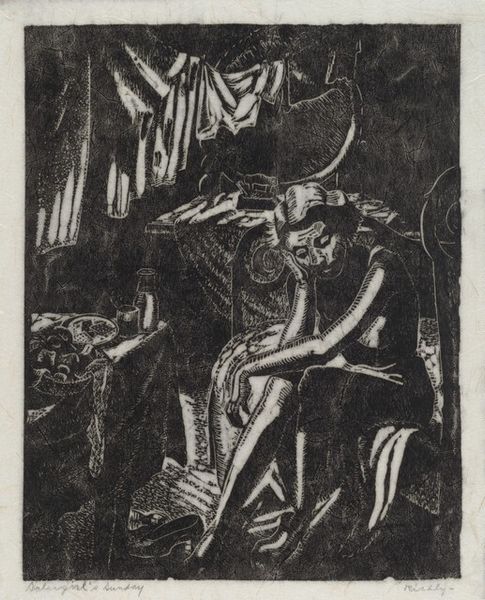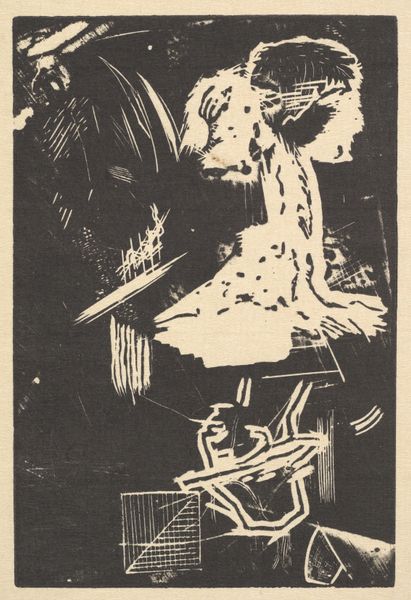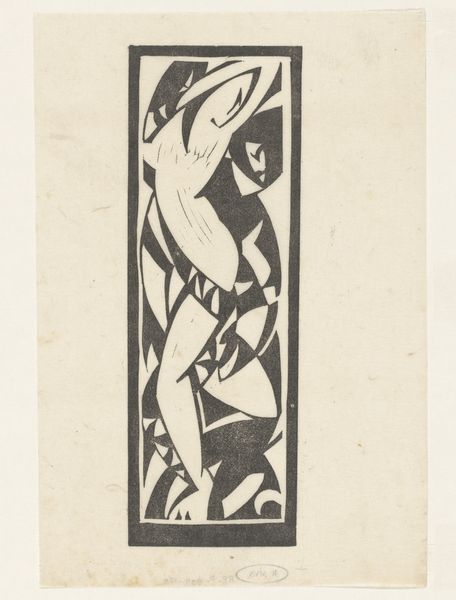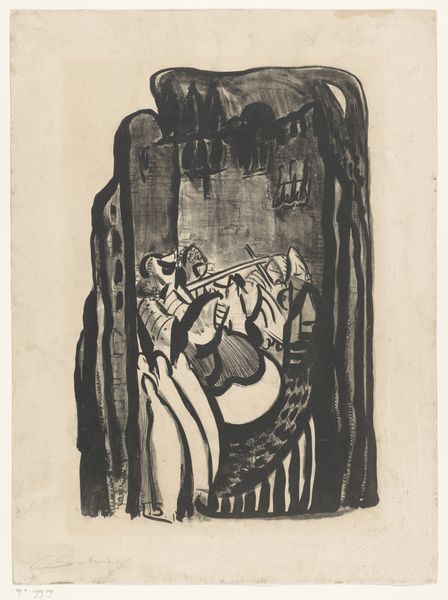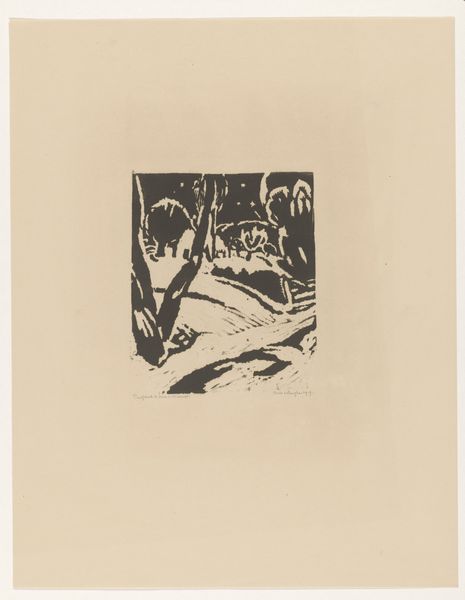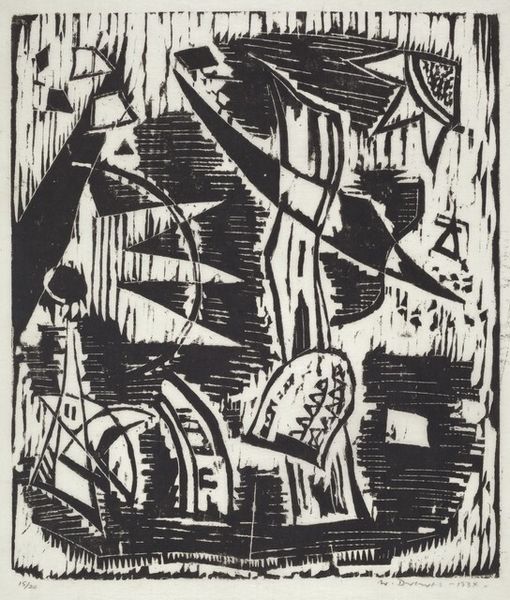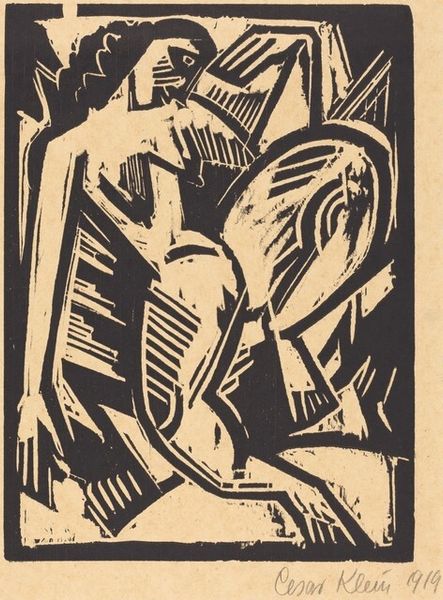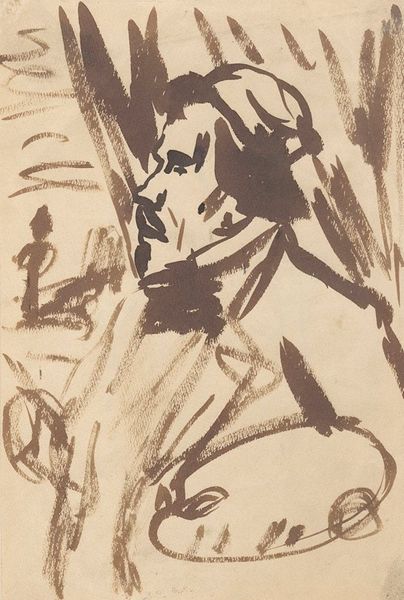
Dimensions: height 330 mm, width 176 mm
Copyright: Rijks Museum: Open Domain
Curator: Here at the Rijksmuseum, we have before us "Delftsche Slaolie N.O.F.," a striking graphic-art poster by Reijer Stolk. Dating to between 1906 and 1945, it's a bold example of the Art Nouveau style in advertising. Editor: Immediately, I'm struck by how theatrical it feels! All heavy blacks and pooling liquid. There's almost a film noir vibe about it. Curator: The heavy lines and stylized rendering are certainly key to the impact of Art Nouveau, yes. Think of this design in its time! Such arresting posters reflected not only consumer culture taking root, but also the potency of graphic design itself, how a product image becomes indelibly associated. We now call it branding! Note how symbols associated with commercial prestige - think of crowns or decorative shields with monograms - also serve an artistic goal by creating visual associations that reinforce identity over time. Editor: So true. You know, seeing the dark cascade of oil, I can’t help but think of a modern update to, like, a memento mori! It’s got that gravity. A splashy dark, dripping reminder. But what on earth is 'Delftsche Slaolie?' Curator: Why, Delftsche Slaolie was, literally translated, Delft salad oil, a popular cooking oil produced by the Nederlandsche Oliefabriek - hence N.O.F. It would have been quite common! As to darker associations, yes, artists employed symbolic language to great effect at the turn of the century. I agree that darkness seeps into how this advert conveys what its target audience should remember... it isn't all cheerful sales pitches! It suggests sophistication, and perhaps also the weight and wealth linked with trade empires... remember the VOC, just for one powerful Dutch historical association. Even consumer products could be sold by association, hinting at status, refinement and global resources! Editor: Absolutely! It’s interesting, the dark coloring definitely hints at some kind of luxury despite being, well, cooking oil! Thanks for illuminating that Reijer Stolk poster's intriguing, subtle and more meaningful background, which otherwise is so very easy to miss. Curator: My pleasure. It shows us, once again, that everyday images often encode quite profound traces of shared cultural life.
Comments
No comments
Be the first to comment and join the conversation on the ultimate creative platform.
